#lupin tai holmes
Text
Lupin vs Holmes (Lupin tai Holmes) 1981 animated movie.
Please tell me someone has it 🥺
#Arsène Lupin#Arsene Lupin#Lupin vs holmes#lupin vs holmes 1981#lupin vs holmes (1981)#lupin tai holmes#i can only find it in spanish from a vhs upload 🥺
2 notes
·
View notes
Text

Lupin
Genre : detective
Category : Special
Episodes : (Kaitou Lupin: 813 no Nazo) 80 min, (Lupin tai Holmes) 65 min
#Kaitou Lupin: 813 no Nazo#Lupin tai Holmes#Lupin#anime#retro anime#anime 80s#anime 70s#special#anime detective
1 note
·
View note
Text
All You Need to Know About Matchups!
CLICK HERE TO VIEW THE WAITLIST
Hi y'all!
This account is solely for matchups for several different fandoms. That means requests for imagines, oneshots, headcanons, etc. will NOT be taken.
Here are some basic things to know about requesting a matchup!
Unless otherwise specified for a certain fandom, a request yields one romantic pairing AND one friendship pairing as well as information on why I think you work well with the individuals I choose. Of course, if you only wish to receive either just the romantic matchup or just the friendship matchup, just let me know!
You can request matchups for several different fandoms at once! For each fandom you request, I will match you up with one romantic partner and one friend unless you request differently.
You can ask to exclude any character(s)!
Where can I request a matchup?
Requests can be made in the MATCHUP REQUESTS/ASK ME ANYTHING tab.
What do I need to include in my request?
Required
Fandom(s)
Your gender and/or pronouns
Your sexual orientation and/or preferences
Description of personality
Optional (but definitely helps me out!)
Description of appearance
Hobbies
Personality alignment (Myers-Briggs, Enneagram, Hogwarts House, etc.)
What you would look for in a partner and/or friend
Any other information you think would be helpful – the more you provide, the more I can work with!
Now with that out of the way, onto the fandoms!
Listed directly below is a shortlist of all the fandoms I take requests for as well as some extra information as needed.
Disclaimers
If a title is in italics, it means that while I feel comfortable providing matchups for this show, I have not watched every season. If a character drastically changes after a certain point, I may not be aware. The last season I watched of these shows will be included in parentheses.
All movies/shows based on novels will most likely focus on the on-screen adaptations of characters.
SHOWS
The 100 (6)
Good Omens
The Good Place (3)
Lucifer (4)
On My Block
Parks and Recreation (4)
Prodigal Son (1)
Sherlock
Space Force
Supernatural (14)
The Walking Dead (8)
MOVIES
Clueless
The Greatest Showman
Harry Potter -- Unless specified in request, will entail 2 sets of matchups as a student (Golden Trio and Marauders eras respectively)
The Hunger Games
Marvel Cinematic Universe -- Unless age is specified, underage characters will NOT be available for romantic matchups
BROADWAY
Anastasia
Beetlejuice
Carrie (2012 Off-Broadway)
Hadestown
Hamilton
Les Misérables
The Phantom of the Opera
Six
VIDEO GAMES
Detroit: Become Human
Red Dead Redemption 2
What’s below the cut?
A masterlist of characters in each fandom that will be considered for each request (unless marked with an asterisk (*), all characters are assumed to be available for both romantic AND friendly matchups while names marked with an asterisk are only available for friendly matchups). Listed alphabetically by first name.
Don’t be afraid to tell me about a typo!
Any questions? Just want to talk? You can also use the MATCHUP REQUESTS/ASK ME ANYTHING tab to get ahold of me!
SHOWS

Bellamy Blake
Clarke Griffin
Echo
Finn Collins
Harper McIntyre
Jasper Jordan
Johnathan “John” Murphy
Jordan Green
Lexa
Lincoln
Marcus Kane
Monty Green
Octavia Blake
Raven Reyes
Roan
Wells Jaha
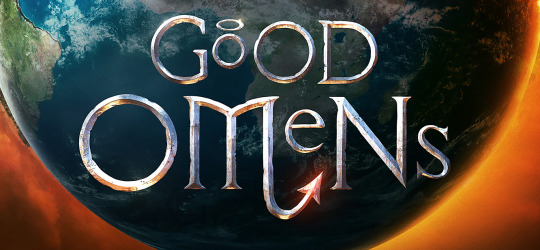
Aziraphale
Anathema Device
Crowley
Newton Pulsifer
Mme. Tracy*
Witchfinder Sgt. Shadwell*

Chidi Anagonye
Eleanor Shellstrop
Jason Mendoza
Michael*
Tahani Al-Jamil

Amenadiel
Det. Chloe Decker
Det. Daniel “Dan” Espinoza
Ella Lopez
Eve
Dr. Linda Martin*
Lucifer Morningstar
Mazikeen “Maze”

Cesar Diaz
Jamal Turner
Jasmine Flores
Monsé Finnie
Oscar “Spooky” Diaz
Ruben “Ruby” Martinez Jr.

Andrew “Andy” Dwyer
Ann Perkins
April Ludgate
Benjamin “Ben” Wyatt
Christopher “Chris” Traeger
Donna Meagle*
Gerald “Jerry” Gergich*
Jean-Ralphio Saperstein*
Leslie Knope
Ronald “Ron” Swanson*

Ainsley Whitly
Det. Dani Powell
Edrisa Tanaka
Lt. Gil Arroyo
Det. James “JT” Tarmel
Jessica Whitly
Malcolm Bright

DI Greg Lestrade
Mrs. Hudson*
James “Jim” Moriarty
Dr. John Watson
Mary Morstan*
Molly Hooper
Mycroft Holmes
Sherlock Holmes

Dr. Adrian Mallory*
Capt. Angela Ali
Brig. Gen. Bradley Gregory*
Dr. Chan Kaifang
Duncan Tabner
Erin Naird
F. Tony Scarapiducci
Kelly King
Maggie Naird*
Gen. Mark Naird*
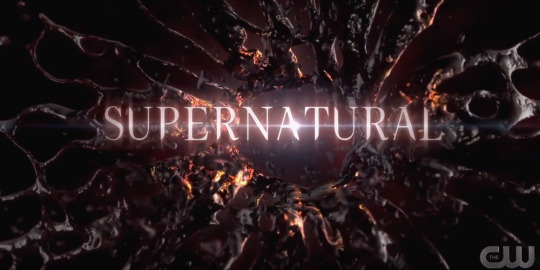
Abbie “Bela” Talbot*
Adam Milligan
Alex Jones
Balthazar
Benjamin “Benny” Lafitte
Castiel
Charlene “Charlie” Bradbury
Claire Novak
Crowley
Dean Winchester
Sheriff Donna Hanscum
Eileen Leahy
Ellen Harvelle*
Gabriel
Garth Fitzgerald IV
Jack Kline
Jessica “Jess” Moore*
Joanna “Jo” Harvelle
Sheriff Jody Mills*
John Winchester
Kaia Nieves
Kevin Tran
Lucifer
Meg Masters
Michael “Mick” Davies
Patience Turner
Robert “Bobby” Singer*
Rowena MacLeod
Rufus Turner*
Samuel “Sam” Winchester
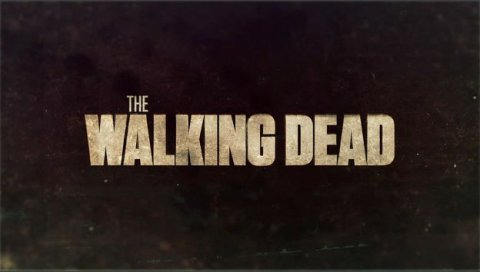
Aaron
Abraham Ford
Andrea*
Beth Greene
Carl Grimes*
Carol Peletier*
Dale Horvath*
Daryl Dixon
Dwight
Enid*
Eugene Porter*
King Ezekiel*
Father Gabriel Stokes
Glenn Rhee
Hershel Greene*
Maggie Greene
Michonne
Morgan Jones*
Negan Smith
Paul “Jesus” Rovia
Rick Grimes
Rosita Espinosa
Sasha Williams
Tara Chambler
Tyreese Williams
MOVIES
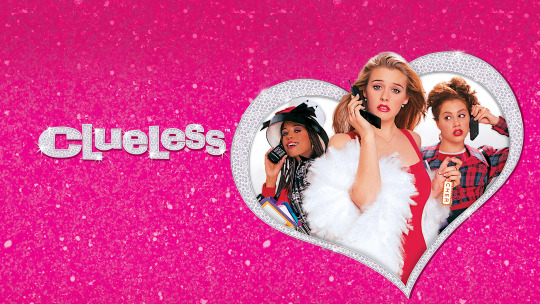
Cher Horowitz
Dionne Davenport
Josh Lucas
Tai Frasier
Travis Birkenstock

Anne Wheeler
Charity Barnum
Jenny Lind
Lettie Lutz*
Phillip Carlyle
Phineas “P.T.” Barnum
W.D. Wheeler

Alastor “Mad-Eye” Moody*
Albus Dumbledore*
Arthur Weasley*
Cedric Diggory
Cho Chang
Draco Malfoy
Fleur Delacour
Fred Weasley
George Weasley
Ginevra “Ginny” Weasley
Harry Potter
Hermione Granger
James Potter
Lily Evans
Luna Lovegood
Minerva McGonagall*
Molly Weasley*
Neville Longbottom
Nymphadora Tonks*
Oliver Wood
Remus Lupin
Ronald “Ron” Weasley
Rubeus Hagrid*
Severus Snape
Sirius Black
Viktor Krum

Cinna
Effie Trinket*
Finnick Odair
Gale Hawthorne
Haymitch Abernathy*
Johanna Mason
Katniss Everdeen
Peeta Mellark

Anthony “Tony” Stark -- Iron Man
Dr. Bruce Banner -- Hulk
Carol Danvers -- Captain Marvel
Dr. Christine Palmer*
Clint Barton -- Hawkeye
Drax the Destroyer*
Edward “Ned” Leeds
Gamora
Groot*
Harold “Happy” Hogan*
Dr. Henry “Hank” Pym*\
Hope van Dyne -- Wasp
Sgt. James “Bucky” Barnes -- Winter Soldier
Col. James “Rhodey” Rhodes -- War Machine
Loki Laufeyson
Luis*
Mantis*
Dr. Margaret “Peggy” Carter*
Cdr. Maria Hill*
May Parker*
Lord M’Baku
Michelle “MJ” Jones
Nakia
Natasha Romanoff -- Black Widow
Nebula*
Col. Nicholas “Nick” Fury*
Okoye
Peter Parker -- Spider-Man
Peter Quill -- Star-Lord
Agt. Phillip “Phil” Coulson*
Pietro Maximoff -- Quicksilver
Rocket*
Samuel “Sam” Wilson -- Falcon
Scott Lang -- Ant-Man
Shuri
Dr. Stephen Strange
Steven “Steve” Rogers -- Captain America
King T’Challa -- Black Panther
Thor Odinson
Valkyrie
Virginia “Pepper” Potts
Vision
Wanda Maximoff -- Scarlet Witch
W’Kabi
Wong*
Yelena Belova
Yondu Udonta*
BROADWAY

Grand Duchess Anastasia Romanov
Dimitri Sudayev
Gleb Vaganov
Countess Lily Malevsky-Malevitch*
Dowager Empress Maria Feodorovna*
Vladimir “Vlad” Popov*

Adam Maitland
Barbara Maitland
Beetlejuice*
Delia Schlimmer
Lydia Deetz*
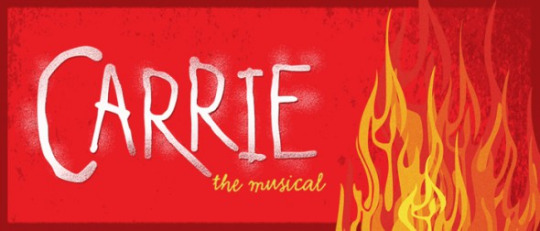
Carrie White
Christine “Chris” Hargensen
Susan “Sue” Snell
Thomas “Tommy” Ross

Eurydice
Hades
Hermes*
Orpheus
Persephone
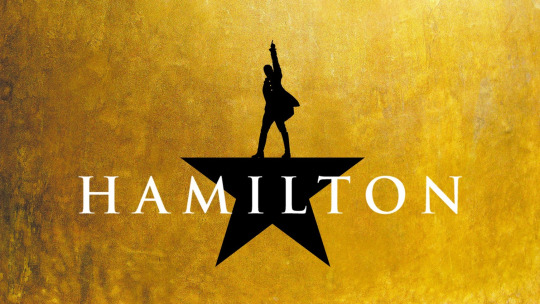
Aaron Burr
Alexander Hamilton
Angelica Schuyler
Elizabeth “Eliza” Schuyler
George Washington
Hercules Mulligan
James Madison
John Laurens
Margarita “Peggy” Schuyler
Maria Reynolds
Marquis de Lafayette
Philip Hamilton
Thomas Jefferson
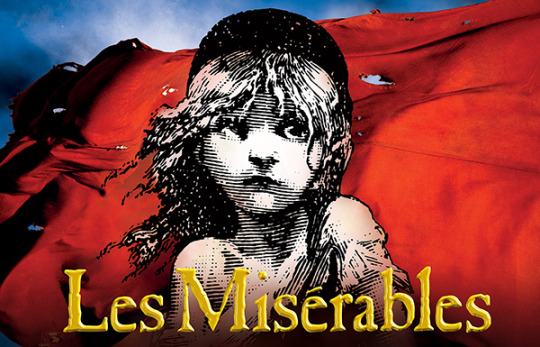
Cosette
Enjolras
Éponine Thénardier
Fantine
Insp. Javert
Jean Valjean
Marius Pontmercy
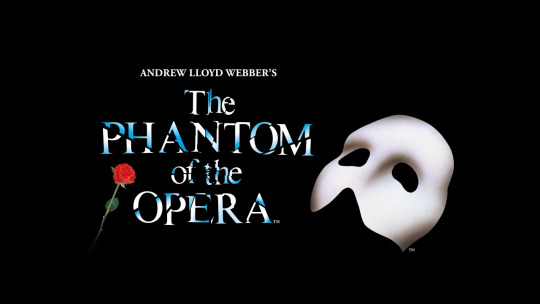
Carlotta Giudicelli*
Christine Daaé
Erik “The Phantom”
Mme. Giry*
Meg Giry
Raoul de Chagny
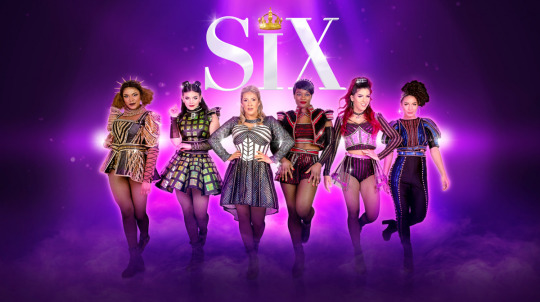
Anna of Cleves
Anne Boleyn
Catherine of Aragon
Catherine Parr
Jane Seymour
Katherine Howard
VIDEO GAMES

Carl Manfred*
Chloe
Det. Chris Miller*
Connor
Elijah Kamski
Lt. Hank Anderson*
Capt. Jeffrey Fowler*
Josh
Kara
Leo Manfred
Lucy*
Luther
Markus
North
Rose Chapman*
Simon
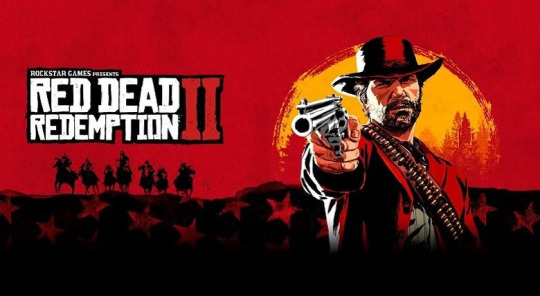
Abigail Roberts
Arthur Morgan
Beau Gray*
Charles Smith
Daniël “Dutch” Van der Linde
Eagle Flies
Hosea Matthews*
Javier Escuella
Johnathan “John” Marston Sr.
Josiah Trelawny
Karen Jones
Kieran Duffy
Leonard “Lenny” Summers
Marion “Bill” Williamson
Mary-Beth Gaskill
Micah Bell
Molly O’Shea
Penelope Braithwaite*
Rev. Orville Swanson*
Sadie Adler
Sean MacGuire
Simon Pearson*
Tilly Jackson
#fandom matchups#matchups#the 100#good omens#the good place#lucifer#on my block#parks and rec#prodigal son#space force#supernatural#the walking dead#clueless#the greatest showman#harry potter#the hunger games#mcu#marvel#broadway#anastasia#beetlejuice#hadestown#carrie the musical#hamilton#les mis#phantom of the opera#six the musical#detroit become human#red dead redemption 2#rdr2
26 notes
·
View notes
Text
The Cinematic Legacy of Lupin: Arsène Lupin’s Live-Action Filmography
https://ift.tt/2ToNPSY
When Netflix premiered the first season of Lupin last January, 70 million sheltered-in-place households ravenously binged it, making the series the most-watched non-English show for its premiere month on the streamer so far. Lupin steals a page from French literature. The hero of Lupin, Assane Diop (Omar Sy) is inspired by France’s iconic ‘Gentleman Thief’ Arsène Lupin, a fictional figure created by French writer Maurice Leblanc in 1905.
Lupin was the subject of some two dozen books by Leblanc, who continued adding into his literary franchise until well into the 1930s. Akin to Robin Hood, Lupin stole from the rich, and often did good deeds despite his thieving capers. He was a master of deception and disguise, a lady killer who always operated with a classy panache. With a legacy spanning more than a century, there have been plenty of live-action depictions in film and TV.
The First Lupin Films are Over a Hundred Years Old
The earliest cinematic portrayals of Lupin were in black and white, and many have been lost. One of the very first was a U.S. production, a short film titled The Gentleman Burglar in 1908. William Ranows, a veteran of over sixty films, played Lupin. It was directed by one of the first film directors ever, Edwin Porter, who worked for Edison.
Leblanc was a contemporary of Sir Arthur Conan Doyle, the creator of Sherlock Holmes. Consequently, Holmes appears in a few Lupin stories. Doyle took legal action against Leblanc, forcing the name change in Lupin stories to the thinly disguised ‘Herlock Sholmes.’ As Holmes is loved by the British, Lupin is cherished by the French, and both characters became global icons. Consequently, among the many film and TV adaptations, several that depicted their rivalry regardless of copyright issues. In 1910, a German film serial titled Arsène Lupin contra Sherlock Holmes starred Paul Otto as Lupin and Viggo Larsen as Holmes (Larsen also served as director.) There were allegedly five installments in the series, but they’ve all been lost.
France produced Arsène Lupin contre Ganimard in 1914 with Georges Tréville as Lupin (Inspector Ganimard was constantly on Lupin’s trail). The silent film Arsène Lupin came out of Britain in 1916 with Gerald Ames in the titular role, followed by more U.S. productions: Arsène Lupin (1917) starring Earle Williams, The Teeth of the Tiger (1919) with David Powell, which is also lost, and 813 starring Wedgwood Nowell. 813 was the title of Leblanc’s fourth Lupin book.
Lupin and the Barrymore Clan of Actors
The legendary thespian John Barrymore played Lupin in 1932’s Arsène Lupin. He took on the role under one of Lupin’s aliases, the Duke of Charmerace. His brother, Lionel Barrymore, played another Lupin nemesis, Detective Guerchard. Given the illustrious cast, this is a standout Lupin film, although there isn’t a shred of Frenchness in Barrymore’s interpretation. Coincidentally, John Barrymore also played Holmes in Sherlock Holmes a decade earlier. He is also the grandfather of Drew Barrymore.
Barrymore’s Arsène Lupin revolved around the theft of the Mona Lisa from the Louvre. Historically, the Da Vinci masterpiece was stolen in 1911 and recovered in 1913. This inspired a Lupin short story, a parody akin to early fanfiction that was not written by Leblanc. In 1912, mystery writer Carolyn Wells published The Adventure Of The Mona Lisa which imagined Holmes and Lupin to be part of the International Society of Infallible Detectives alongside A. J. Raffles, Monsieur Lecoq, and other crime-solving luminaries. Barrymore’s Arsène Lupin does not retell this tale, but the theft of the Mona Lisa comes up again in other Lupin films because it’s France so robbing the Louvre is a common plot point. Netflix’s Lupin begins with Diop’s heist of the Queen’s necklace from the Louvre, an Easter egg referring to Leblanc’s original Lupin short story, ‘The Queen’s Necklace’ published in 1906.
The ‘30s delivered two more Lupin films. The French-made Arsène Lupin detective (1937) starred Jules Berry as Lupin and the American-made Arsène Lupin Returns (1938) with Melvyn Douglas who was credited under another Lupin alias Rene Farrand (Lupin has a lot of aliases). Despite being a completely different production, Douglas’ film was an attempt to capitalize on the success of Barrymore’s film as both films were from MGM. Universal Studios entered the fray soon after with their version Enter Arsène Lupin (1944) starring Charles Korvin. The following year, the Mexican-made Arsenio Lupin (1945) featured Ramón Pereda as the French thief. That film also starred José Baviera as Sherlock.
The Early Japanese Lupin Adaptations
Lupin captured the hearts of the Japanese. Ironically, Japanese speakers have a difficult time pronouncing ‘L’s so Lupin is usually renamed as ‘Rupan’ or ‘Wolf’ (Lupine means wolf-like – remember Remus Lupin from Harry Potter). As early as 1923, Japan also delivered a silent version of 813, retitled Hachi Ichi San, starring Komei Minami as the renamed Lupin character of Akira Naruse.
In the ‘50s, Japan produced 3 films that credit Leblanc: Nanatsu-no Houseki (1950) with Keiji Sada, Tora no-Kiba (1951) with Ken Uehara, and Kao-no Nai Otoko (1955) with Eiji Okada. However, post-WWII Japan has obscured most of the details on these films. Like Hachi Ichi San, these Japanese versions laid the foundations for the Lupin III, which debuted as a manga in 1967 and spawned a major manga and anime franchise. In karmic retribution for Leblanc poaching Sherlock, Japan stole Lupin. Lupin III was Arsène Lupin’s grandson.
Notably, the second Lupin III feature film, The Castle of Cagliostro, marked the directorial debut of famed animator Hayao Miyazaki and is considered a groundbreaking classic that inspired Pixar and Disney (Disney’s The Great Mouse Detective (1986) pilfered the finale clockwork fight from The Castle of Cagliostro). In the wake of the anime Lupin III Part I (1971), Japan produced some anime films that were more loyal to Leblanc, notably Kaitō Lupin: 813 no Nazo (1979) and Lupin tai Holmes (1981). However, this article is focused upon live-action adaptations. Lupin III is another topic entirely.
In the late ‘50s and into the ‘70s, France reclaimed her celebrated son. Robert Lamoureux became Lupin for two films, Les aventures d’Arsène Lupin (1957) and Signé Arsène Lupin (1959). A comedy version pitted rival sons of Lupin against each other in Arsène Lupin contre Arsène Lupin (1962). Playing the Lupin brothers were Jean-Pierre Cassel and Jean-Claude Brialy.
Lupin on the Small Screen
Read more
TV
From Lupin III to Inspector Gadget: Examining the Heirs of Arsène Lupin
By Natalie Zutter
France also delivered several TV series. Arsène Lupin ran from 1971 to 1974 and starred Georges Descrières. It encompassed 26 60-minute episodes. L’Île aux trente cercueils (1979) is often included in Lupin filmographies because it is based on a Leblanc novel published in 1919 in which Lupin makes a guest appearance. However, he was omitted from this six-episode miniseries, so it doesn’t quite count. Arsène Lupin joue et perd (1980) was another six-episode miniseries loosely based on ‘813’ with Jean-Claude Brialy from the 1962 comedy.
One more French TV show, Le Retour d’Arsène Lupin, was televised in two seasons, 1989-1990 and 1995-1996. These were 90-minute episodes with 12 in season 1 and eight in season 2. François Dunoyer starred as Lupin.
And in 2007, the largest Lupin TV show ran for a whopping 96 episodes plus one special. Lupin was made in the Philippines no less, starring Richard Gutierrez as André Lupin
Lupin in the Last Decade
In 2011, Japan delivered one more live-action film Lupin no Kiganjo starring Kōichi Yamadera. Based on Leblanc’s 3rd Lupin book, L’aiguille Creuse, the film is reset in modern Japan.
In the strangest permutation of Japanese Lupins, Daughter of Lupin was a TV series that is an odd hybrid of Lupin III and Leblanc’s work. A campy sitcom in the tradition of Romeo and Juliet, Hana (Kyoko Fukada) comes from a family of thieves known as the L clan who are inspired by Lupin. Her lover, Kazuma (Koji Seto), is from a family of cops. When in thief mode, Hana wears a carnival mask and a velvet catsuit. It’s goofy, sort of a live action version of anime. It ran for two seasons in 2019 and 2020.
The Lupin Adaptation You Should See
The strongest modern adaptation of Leblanc’s iconic burglar is the period film Arsène Lupin (2004). It’s an actioner, a creation story for Lupin, starting from his childhood and moving rapidly to him becoming a master gentleman thief. Romain Duris plays the titular role, and the film is in French. Backing Duris are veteran actresses Kristin Scott Thomas as Comtesse de Cagliostro and Eva Green as Clarisse de Dreux-Soubise. The story is absurd, like a mash-up between a superhero film and the DaVinci code, and it gets a bit muddled in the telling. However, it’s shot on location (including the Louvre) and encapsulates the spirit of Leblanc’s character in an updated fashion. It’s a perfect primer for Lupin Season 2.
cnx.cmd.push(function() { cnx({ playerId: "106e33c0-3911-473c-b599-b1426db57530", }).render("0270c398a82f44f49c23c16122516796"); });
Lupin seasons 1 and 2 are available to stream on Netflix now.
The post The Cinematic Legacy of Lupin: Arsène Lupin’s Live-Action Filmography appeared first on Den of Geek.
from Den of Geek https://ift.tt/2U0px1N
4 notes
·
View notes
Text
Milky Holmes' Rise to Fall, or How to Find Hope in Troubled Times
Milky Holmes reminds me of Žižek. And while it might seem quite nonsensical to tie this sentence together, it’s also something that gives us light about the times we’re facing.
Milky GODS
Always controversial, the Slovenian philosopher Slavoj Žižek does have some interesting things to say. But even though he’s mostly known for his approach of leftist politics, the analysis of his that has stuck with me the most doesn’t relate to politics, or at least not directly. It’s his commentary about the animated film Kung Fu Panda, produced by Dreamworks. He has referred to the film a couple of times while highlighting something that has now become sort of a recurrent topic of his mythos. The idea of faith. This idea, also explained by him in the form of an anecdote about a scientist (Niels Bohr) who didn’t believe in charms, yet used to put one in his house just because he was told “it would work, even if he didn’t believe in it”, is essential to Kung Fu Panda and to Dreamworks as a whole (even if Žižek doesn’t directly acknowledge it). While the film works as a parody of Chinese martial arts films, and spends part of its runtime satirizing Chinese philosophy, in the end these principles are embraced, as Po’s wu wei defeats Tai Lung’s ambition (and we can say the same about the way Shrek and Megamind relate to fairy tales and superhero fantasy, just to cite other examples).
But what does any of this have to do with Milky Holmes? What is this Milky Holmes, even? And as many of you might not be familiar with this long running multimedia franchise, it wouldn’t do harm to recapitulate its history. To understand Milky Holmes, we must first understand its seeds, which are in Broccoli and Bushiroad, two Japanese companies which were both founded by a single man, named Takaaki Kidani. Kidani started Broccoli in the late ‘90s, which first worked as a doujin management company for events, then expanding itself through Gamers, a goods store directed towards the otaku market. Gamers was immortalized and popularized through the Di Gi Charat franchise, produced by Broccoli and extremely massive through the late 90s and early 2000s. Spanning various anime adaptations, numerous manga, and lots of merchandise, the now classic characters were a boom within this same otaku market, and part of this success even crossed overseas, as you might see if you venture into old anime archives.
This really handsome dude is Takaaki Kidani
Now the success of Di Gi Charat probably wasn’t just because of the mascot made designs, though of course that had a part in its popularity. Aside from the already obvious fact, the Di Gi Charat franchise, at least in its first animated adaptation, had a pretty good sense of humor and irony. In a way, it was mocking the very own otaku it was targeted towards, and while it sure wasn’t the first to do so, this style of self-deprecating and sometimes grotesque or even infantile humor the series subjected its viewers to was something special. And while Di Gi Charat had quite the acid tone, it wasn’t without its share of tame and even heartwarming moments. It was moe, marketable of course, but there was something else as well. This series had a heart.
The heart of the show has a name and it’s Puchiko
It’s this spirit that Milky Holmes, more than 10 years after the creation of Di Gi Charat, held as its foundation as one of the star projects of the then recently started Bushiroad, founded after Kidani left Broccoli. Learning from his success in Broccoli’s projects such as the aforementioned Di Gi Charat, and also the media franchise Galaxy Angel, Milky Holmes was thought of as a multimedia project from the start. In the case of Milky Holmes, radio dramas, a manga, a PSP video game, an anime adaptation, and, perhaps most importantly, a seiyuu/idol unit were launched. I say most importantly because it was the disbandment of this unit that signaled the end of the franchise as a whole. In January’s 28th of 2019, Milky Holmes gave their final live performance at the Budokan, in fact ending the decade old franchise.
The end of Milky Holmes
On the anime side of things, the last installment was Psycho no Aisatsu, a crossover special episode featuring the main character of the Cardfight!! Vanguard franchise, a trading card game series for kids that was also created by Bushiroad. It was the symbolic pass on the torch to a younger, still profitable franchise in Bushi, that hopefully might keep the spirit of the Milkies alive. But we must not be sad for what has ended, as this franchise will always stay there to be revisited, even for people who never got to experience it when it was still active.
And it’s because of this that I have not forgotten about Milky Holmes, even though it has been years since it ended. I feel especially partial to the anime, particularly its first two seasons, and the 2016 movie: Milky Holmes' Counterattack (and what a movie is that one). One common thing about these three is that all of them feature Makoto Moriwaki as a director. And I feel she’s the one who better captures the spirit I mentioned above when talking about Di Gi Charat. It isn’t the only way to understand the series: there’s the video games, that might be seen as the source material; the Alternative OVAs, that are a closer adaptation of the games; and the two other anime seasons, which are completely different to anything else (and most people don’t seem to like); but Morikawi’s interpretation is the most interesting one, at least to me.
Now, you might be tired of so much anticipation and context, but it’s important to understand the background of this director to realize what she brought to the franchise (because yes, it’s a she) to, as I believe, perfect it. Makoto Moriwaki has mostly made a career out of directing children’s anime, more specifically anime for girls. Series such as the Sanrio based My Melody and PriPara have been directed by her, along with some Jewelpet seasons and even some Doraemon episodes. But a sort of black sheep among all that family friendly content is the raunchy adult comedy Ebichu, which, in spite of its cutesy visuals reminiscent of Hamtaro, is a series mostly targeted towards older women, full of jokes about adult life that, of course, involve a lot of sex.
it means a dirty word, if you didn’t realize
The Milky Holmes directed by Moriwaki is a middle ground between those two poles. On one hand, the cynicism, irony, and hidden sexual references in an outwardly kids friendly series, and on the other, the fantasy and the hopeful nature of magical girls and idol anime. And this dichotomy is also highlighted when we understand the target of this series. Despite its looks, Milky Holmes is not directed towards children. It’s not a kids show, but rather, a completely otaku business. It was broadcasted as shinya anime at 11 pm, it has its share of adult humor, and of course, the moe characters are exactly that, there’s no ambiguity there. It’s made to sell merchandise, discs and BDs to fat weirdos. But it’s quite interesting how the show treats its own audience, because if we’re to take Milky Holmes as an otaku product, it isn’t simply cynical.
Yes, that there is a ****plug
We have talked about Milky Holmes as a product and as a media franchise, but let’s review the series itself. To those who don’t know, Milky Holmes is set in a fantastical time and space called the Age of Great Detectives. In this world, Great Detectives and their eternal rivals, Gentlemen Thieves, are in constant struggle. They’re aided by their Toys, special powers whose name might be an irony on Bushiroad’s own status as a company.
A fascinating part of the Milky Holmes franchise for any crime or detective fiction freak is that most of the character names are taken from legendary detectives and criminals. There’s the 4 Milky Holmes members, which are respectively: Sherlock “Sheryl” Shellingford, the always energetic and optimistic leader (named after the most famous detective of all); Nero Yurizaki, a greedy, egotistical bokukko (named after the gluttonous Nero Wolfe); Hercule “Elly” Burton, a shy girl who has the most awareness inside the Milkies (named after Agatha Christie’s Hercule Poirot); and Cordelia Glauca, the shoujo-esque dramatic and delusional member of the crew (named after Cordelia Gray, the only character of the four that is originally female).
From left to right, unlike your Japanese mangos
They battle constantly against the Gentlemen Thief Empire, led by the intense and prideful Arsene (after Arsène Lupin, the French gentleman thief also recalled by the Monkey Punch character); and completed with Twenty, a narcissistic nudist that weaponizes his erect nipples (based on Menso Nijuu, a villain from the Ranpo Edogawa canon); Stone River, a prude warrior with a samurai pride (based on Goemon Ishikawa, the outlaw hero from Japanese folklore, also referenced by Lupin III); and Rat, who’s victim of everyone’s forgetfulness (based on Kozo Nezumi, a folk hero from the Edo period).
Twenty, Arsene, Stone River, and Rat
There’s also a third party in discord, that can either work as ally or enemy depending on circumstance (much like in your typical detective story) which is of course formed by the cops. The G4 is the “elite” patrol of law enforcement whose effectiveness also depends on plot convenience, and their leader (and child genius with infinite amounts of IQ) Kokoro-chan’s (named after Kogoro Akechi, the famous Ranpo Edogawa detective) mood. The other members are Tsugiko Zenigata (after Heiji Zenigata, a Japanese legend), a somewhat tomboyish girl voiced by Miyuki Sawashiro; Hirano Hasegawa (after Heizo Hasegawa, from the Onihei Hankacho novels), a traditional Japanese girl who is a master of combat; and Saku Toyama (after Kagemoto Toyama, a historic character made legend), the technological expert of the gang.
She just keeps it going up
Don’t call her Kokoro-chan, she’ll get angry
However, the main source of conflict (and comedy) in the series is that, despite being quite powerful and capable as detectives with the aid of their toys, the Milkies are pretty much nothing without them. Dame dame (useless), is something they’ll often have to hear, as they constantly struggle with the loss of their toys at the start of almost every new installment (save for Futari wa and TD, in which they weren’t the main characters because of this exact reason). Nonetheless, in spite of how hard they might fall, how much they can be humiliated and degraded (and they sure will), and basically turn into dumb slapstick cartoons, they will always stand up again, never losing hope even when taking a detour, or when they’re becoming farmers instead.
Milky farmers
In this acknowledgment of the cyclical and absurd nature of their misfortunes, made explicit in the movie by the (unintentional) use of words by Sheryl: “it’s rise to fall”, the philosophical implications of the series are unlocked, at least from the Moriwaki iteration of it. It’s an absurd reality, in which no matter how high one can be, one can always fall to the lowest of the low. Yet, when you have fallen, there’s nothing else you can do but go up, try and hope for the best, never giving in to life no matter how discouraging or absurd it might become.
It’s existential philosophy, right inside a moe anime, and one can’t be anything but thankful of someone who is giving such messages inside a work that could conform to just offering a product for profit. Instead, what Milky Holmes is doing is to tell its audience that no matter how hard their lives might get, no matter how repeatedly they might hear that they’re useless, that they’re dumb or hopeless, they must never give up. It’s quite beautiful, even more so when you’re aware of the darker sides of the otaku and the stigma and social alienation a lot of these people face in their country. And so, Milky Holmes might be a ray of light amidst a rabbit hole of isolation, which can be relatable to most of us as we face the current pandemic. A sign that even if we can’t see it, there’s hope at the end of the tunnel.
Yes, she’s saying that when they’re in prison
Closing on a hopeful note, I’ll let you in on a cool fact. Do you know who directed the Milky Holmes movie alongside Moriwaki? I will give you some lines to guess, if you think you’re smart detectives.
…
…
…
…
…
…
…
…
Yes! It was Hiroaki Sakurai, who, coincidentally (or not), was the series director for most of the Di Gi Charat anime versions since its first installment in 1999. It’s really cool how everything circles back to a now almost prehistoric franchise, but it also circles back in a less symbolic way. 2021 seems to be a new year for Di Gi Charat, as the franchise is getting a revival as “Di Gi Charat Reiwa”, a new generation of the series which contemplates lots of merchandise and, most importantly, a new anime series, helmed by no other than the same Hiroaki Sakurai. Here’s hoping for a revitalization of this lively spirit, a hopeful affirmation of the disgusting manchildren we all have inside.
Promotional image for this era’s own Charat
Salvador González Turrientes
Links and additional sources of information:
Žižek on Kung Fu Panda
The Milky Holmes article from the English Wikipedia
Wikipedia list of the Milky Holmes characters (in English)
Takaaki Kidani's article (in English)
Takaaki Kidani’s article (in Japanese)
Di Gi Charat's Wikipedia (in English)
Hiroaki Sakurai's (in English)
Makoto Moriwaki's article (in English as well)
The news of the Di Gi Charat Reiwa anime (from ANN)
1 note
·
View note
Text










Lupin tai Holmes (1981)
Странный у меня сейчас был опыт - я смотрел японское аниме с испанским дубляжом с английскими (автоматическими) субтитрами. На что не пойдешь ради Холмса... На удивление оказалось приличное и интересное аниме, хотя я про него узнал практически случайно и непохоже, чтобы его упоминали даже шерлокианцы. Здесь Шерлок Холмс вновь выступает против Арсена Люпена, и это редкий случай, когда мне это действительно нравится. В отличие от мексиканской версии здесь много Холмса и в отличие от видеоигры здесь не унижают интеллект Холмса.
Холмс здесь обладатель песочно-блондинистых волос и ярко-голубых глаз - а в остальном типичный мультяшный Холмс, про которого нельзя сказать ни хорошего, ни плохого. Также у него у него есть довольно-таки эмоциональный и трусоватый Уотсон - с маленькими тараканьими усиками. Вместе они отправляются в Париж, ведь Люпен в своем письме практически взял Холмса "на слабо", велев ему сидеть дома на Бейкер-стрит. Так и началась схватка интеллектов... но на самом деле это было больше расследование смерти одного богача. Люпена было мало, но это не беда - зато было очень много Холмса. Тот не блистал, конечно, ничего книжного, но аниме само по себе красивое, так что смотреть его было приятно (несмотря на испанский дубляж).
Так что да, на удивление неплохое аниме, не проходняк. Но не то, чтобы шерлокианцу тут прям было что ловить, несмотря на обильное количество Холмса.
0 notes

